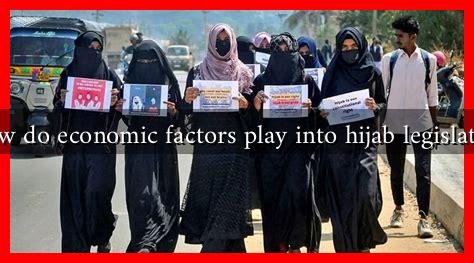-
Table of Contents
- How Do Economic Factors Play into Hijab Legislation?
- The Intersection of Economy and Legislation
- Case Studies: Economic Influences on Hijab Legislation
- France: Secularism and Economic Pressures
- Turkey: Economic Growth and Cultural Identity
- The Role of Globalization
- Conclusion: The Economic Lens on Hijab Legislation
How Do Economic Factors Play into Hijab Legislation?
The hijab, a traditional headscarf worn by many Muslim women, has become a focal point of debate in various countries, particularly in the context of legislation. While cultural and religious factors are often highlighted, economic considerations also play a significant role in shaping hijab legislation. This article explores how economic factors influence the legal landscape surrounding the hijab, examining case studies, statistics, and broader implications.
The Intersection of Economy and Legislation
Economic factors can significantly influence legislative decisions regarding the hijab. These factors include:
- Labor Market Dynamics: The demand for a diverse workforce can lead to more inclusive policies.
- Tourism Revenue: Countries that attract tourists may be less likely to impose strict dress codes.
- International Relations: Economic ties with Muslim-majority countries can affect domestic policies.
Case Studies: Economic Influences on Hijab Legislation
Several countries provide compelling examples of how economic factors shape hijab legislation:
France: Secularism and Economic Pressures
France’s 2004 law banning conspicuous religious symbols in schools, including the hijab, was influenced by the country’s commitment to secularism. However, economic factors also played a role. The French economy has a significant immigrant population, many of whom are Muslim. The government faced pressure to balance secular values with the need to integrate these communities into the workforce.
According to a 2019 report by the French Ministry of Labor, Muslim women who wear the hijab face higher unemployment rates, which can be attributed to discrimination. This economic disadvantage has led to calls for more inclusive policies that would allow women to wear the hijab without fear of losing job opportunities.
Turkey: Economic Growth and Cultural Identity
In Turkey, the hijab has been a contentious issue, particularly in the context of its secular constitution. However, the rise of the Justice and Development Party (AKP) in the early 2000s marked a shift in policy. The party’s economic reforms led to significant growth, and as the economy flourished, so did the acceptance of the hijab in public spaces.
Statistics show that between 2002 and 2018, Turkey’s GDP grew from $236 billion to $771 billion. This economic growth allowed for a more diverse cultural expression, including the acceptance of the hijab in universities and government offices. The economic stability provided by the AKP’s policies has led to a more favorable environment for hijab-wearing women.
The Role of Globalization
Globalization has also impacted hijab legislation. As countries become more interconnected, economic considerations often lead to changes in domestic policies. For instance:
- Increased Trade: Countries that engage in trade with Muslim-majority nations may adopt more lenient policies to foster better relations.
- Foreign Investment: Attracting foreign investors can lead to more inclusive labor laws, including those related to religious attire.
For example, in the United Arab Emirates, the government has promoted a tolerant image to attract international businesses. This has resulted in a more relaxed approach to hijab legislation, allowing women to wear the hijab freely in both public and private sectors.
Conclusion: The Economic Lens on Hijab Legislation
Economic factors play a crucial role in shaping hijab legislation across the globe. From labor market dynamics to the influence of globalization, the interplay between economics and cultural identity is complex and multifaceted. As countries navigate the challenges of integration, discrimination, and economic growth, the policies surrounding the hijab will likely continue to evolve.
In summary, understanding the economic implications of hijab legislation is essential for grasping the broader social dynamics at play. As nations strive for inclusivity while maintaining their cultural identities, the economic landscape will remain a significant factor in determining the future of hijab legislation.
For further reading on this topic, you can explore resources from the Pew Research Center that delve into the intersection of religion, culture, and economics.




